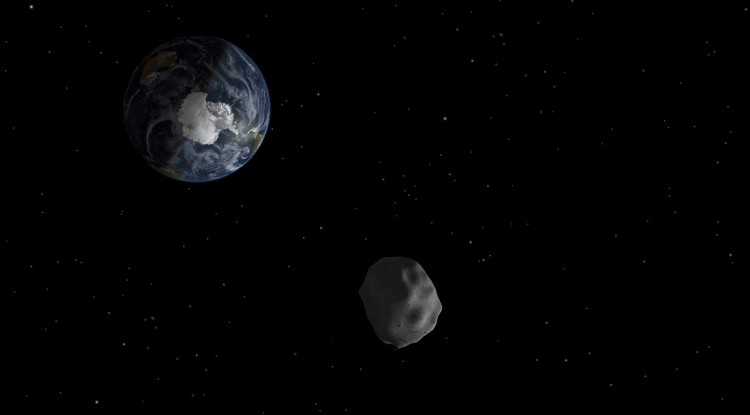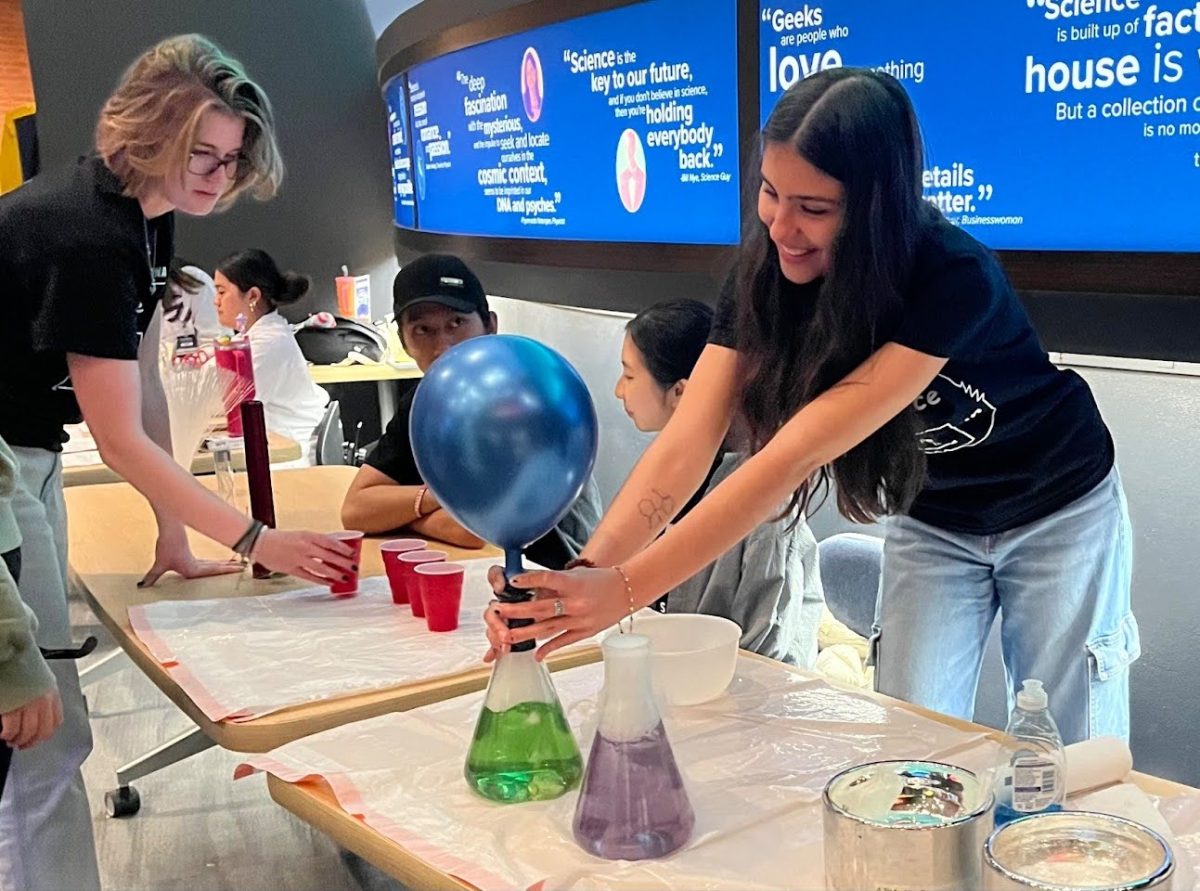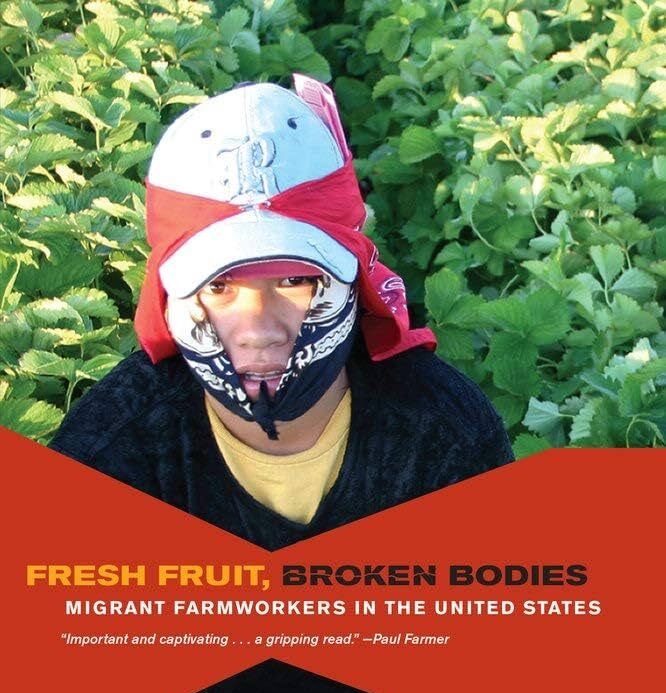A team of researchers at the UA’s Lunar and Planetary Laboratory have successfully observed and characterized the smallest asteroid known to science. The asteroid spans a mere six-feet in diameter and despite its miniscule size is one of the brightest asteroids that has ever been observed.
“Usually the small asteroids are harder to find unless they come really close to the earth, and in this case not only did we find it, we were able to characterize it,” said Vishnu Reddy, lead researcher on the project and a UA assistant professor in the LPL.
RELATED: UA scientists discover water on metal asteroid
The asteroid, dubbed 2015 TC25, was discovered back in October of 2015. The researchers were only able to study it once it made a close fly-by of the earth, and then began to analyze it after that, Reddy said.
In order to study the asteroid, Reddy used a process known as spectroscopy, which relies on the reflections of light off the asteroid’s surface.
“Depending upon what is on the surface, certain colors are brighter than the others,” Reddy said. “In this case, there were certain colors that were darker, and there were certain colors that were brighter.”
The color brightness acts like a fingerprint of the asteroid’s mineral makeup. Because most meteorites come from asteroids, researchers were able to compare the properties of the asteroid to those of the meteorites they had physically in the lab, according to Reddy.
While the discovery of the asteroid itself may not be a huge scientific breakthrough, there is still much to be learned from the tiny asteroid.
“These asteroids probably get discovered by the dozens a month, I would say,” said Michael Nolan, a senior research scientist at the LPL. “What’s interesting about this one is that this is the size of things that are falling [to Earth] that we’re actually picking up and taking to the lab and doing stuff with.”
Like a missing piece in a puzzle, researchers can now learn more about what the meteorites they have on Earth may have been like in space. Studying asteroids in space can be limited, because you have to use a telescope and look through the atmosphere, which isn’t easy to do, according to Nolan.
Nolan said that if you have a meteorite in a lab you can measure it in different ways, but you’ll still be missing information on its origin. Because it is so small and close to Earth, the 2015 TC25 bridges that gap by providing valuable information to researchers.
One particularly unique property of the asteroid is its brightness. 2015 TC25 reflects 60 percent of the light that reaches it, while most asteroids only reflect 15-20 percent, Reddy said. This factor was part of the reason the team was able to deduce so much about its physical properties and chemical makeup.
“Usually most of the minerals [on the surface] have some sort of iron or magnesium that makes it darker or more colorful,” Reddy said. “In this case, it formed in a region of the solar nebula when the solar system was forming that did not have any iron or oxygen.”
Another interesting property of the asteroid is its absence of regolith, a dusty material typically found on space objects such as the moon, Reddy said.
RELATED: To Infinity and Beyond: OSIRIS-REx deputy principal investigator retires after years of service
“We all thought small asteroids or meteoroids in space didn’t have regolith,” Reddy said. “This is the first time we’ve found evidence that it is actually bare rock, it’s simply a rock floating
in space.”
Unlike the larger asteroid Bennu, which is currently the end destination of the UA-led OSIRIS-REx space mission, this asteroid seems to be much more processed in terms of its physical properties, Nolan said.
According to Nolan, 2015 TC25 may have come from a bigger asteroid at the dawn of the solar system, undergoing some melting in the process.
“The reason why we’re going to Bennu is this dark material on its surface masks the spectral signatures,” Reddy said. “We’re not able to get enough unique signatures to identify what it’s made of, so we have to physically go there, take a piece and come back.”
Researchers are mainly interested in studying the entire population of small asteroids as a whole.
“We want to know for the population, are they mostly rocks? Are they mostly organic? Could they have brought water to the earth?” Nolan said.
Even though the probability of 2015 TC25 causing any harm to our planet is very low, small asteroids are still something to be concerned about. According to Reddy, who is currently studying 20-meter and smaller asteroids through a NASA-funded project, there are many more small asteroids than there are large asteroids. This means the chance of us getting hit by a small asteroid is very high compared to that of a larger object.
“We want to know different things,” Reddy said. “Like what is the ratio of large to small asteroids? If we know that ratio, we can prepare a mitigation plan. We’re trying to understand things that really affect people on the earth, at least in their day to day life.”
The asteroid 2015 TC25 was discovered by the Catalina Sky Survey. To learn more about the things that the Catalina Sky Survey is discovering, check out its website.
Follow Hannah Dahl on Twitter.









